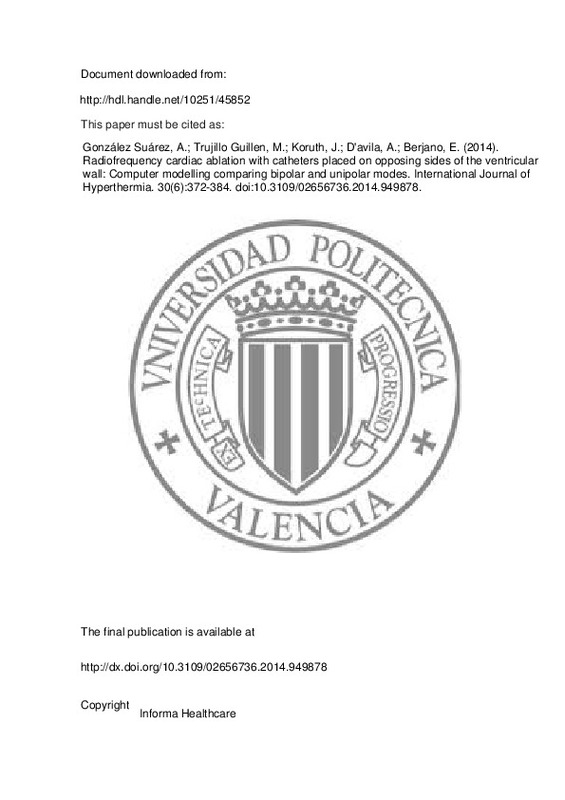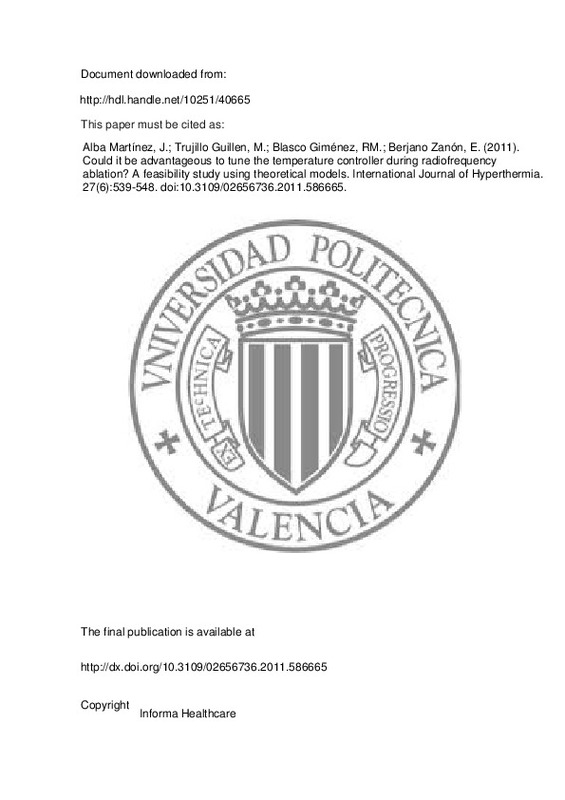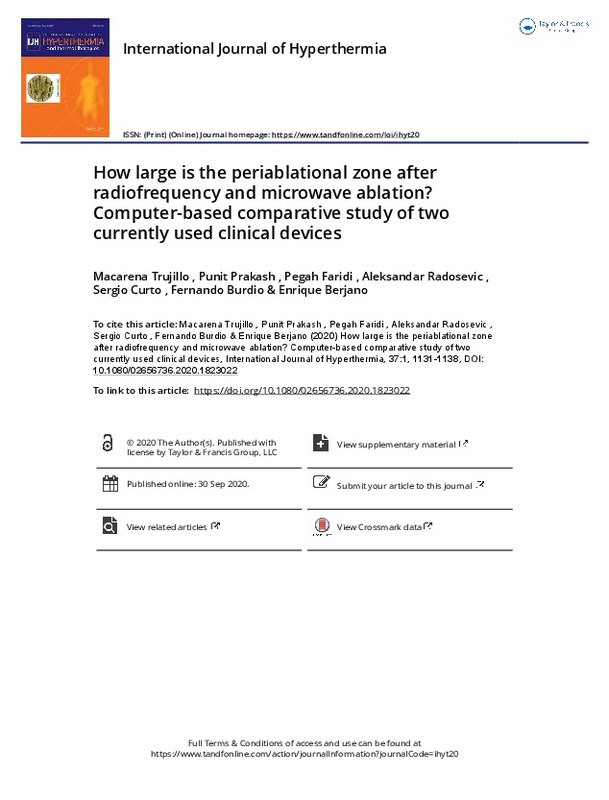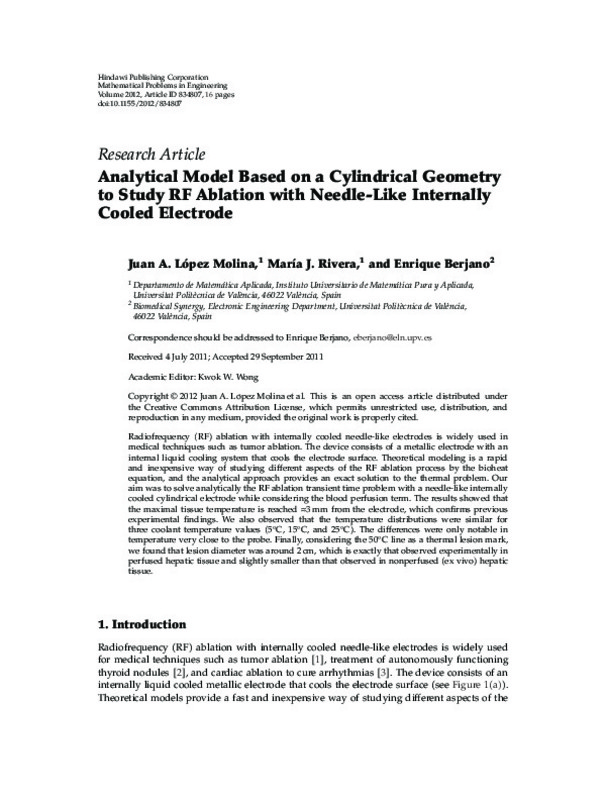SIVAGANGABALAN, G., BARRY, M. A., HUANG, K., LU, J., POULIOPOULOS, J., THOMAS, S. P., … KOVOOR, P. (2010). Bipolar Ablation of the Interventricular Septum is More Efficient at Creating a Transmural Line than Sequential Unipolar Ablation. Pacing and Clinical Electrophysiology, 33(1), 16-26. doi:10.1111/j.1540-8159.2009.02602.x
Nagashima, K., Watanabe, I., Okumura, Y., Ohkubo, K., Kofune, M., Ohya, T., … Hirayama, A. (2011). Lesion Formation by Ventricular Septal Ablation With Irrigated Electrodes. Circulation Journal, 75(3), 565-570. doi:10.1253/circj.cj-10-0870
D’ Avila, A., Houghtaling, C., Gutierrez, P., Vragovic, O., Ruskin, J. N., Josephson, M. E., & Reddy, V. Y. (2004). Catheter Ablation of Ventricular Epicardial Tissue. Circulation, 109(19), 2363-2369. doi:10.1161/01.cir.0000128039.87485.0b
[+]
SIVAGANGABALAN, G., BARRY, M. A., HUANG, K., LU, J., POULIOPOULOS, J., THOMAS, S. P., … KOVOOR, P. (2010). Bipolar Ablation of the Interventricular Septum is More Efficient at Creating a Transmural Line than Sequential Unipolar Ablation. Pacing and Clinical Electrophysiology, 33(1), 16-26. doi:10.1111/j.1540-8159.2009.02602.x
Nagashima, K., Watanabe, I., Okumura, Y., Ohkubo, K., Kofune, M., Ohya, T., … Hirayama, A. (2011). Lesion Formation by Ventricular Septal Ablation With Irrigated Electrodes. Circulation Journal, 75(3), 565-570. doi:10.1253/circj.cj-10-0870
D’ Avila, A., Houghtaling, C., Gutierrez, P., Vragovic, O., Ruskin, J. N., Josephson, M. E., & Reddy, V. Y. (2004). Catheter Ablation of Ventricular Epicardial Tissue. Circulation, 109(19), 2363-2369. doi:10.1161/01.cir.0000128039.87485.0b
Dukkipati, S. R., d’ Avila, A., Soejima, K., Bala, R., Inada, K., Singh, S., … Reddy, V. Y. (2011). Long-Term Outcomes of Combined Epicardial and Endocardial Ablation of Monomorphic Ventricular Tachycardia Related to Hypertrophic Cardiomyopathy. Circulation: Arrhythmia and Electrophysiology, 4(2), 185-194. doi:10.1161/circep.110.957290
Sosa, E., Scanavacca, M., d’ Avila, A., Oliveira, F., & Ramires, J. A. F. (2000). Nonsurgical transthoracic epicardial catheter ablation to treat recurrent ventricular tachycardia occurring late after myocardial infarction. Journal of the American College of Cardiology, 35(6), 1442-1449. doi:10.1016/s0735-1097(00)00606-9
Nagashima, K., Watanabe, I., Okumura, Y., Sonoda, K., Kofune, M., Mano, H., … Hirayama, A. (2012). Epicardial Ablation With Irrigated Electrodes. Circulation Journal, 76(2), 322-327. doi:10.1253/circj.cj-11-0984
Berjano, E. J. (2006). BioMedical Engineering OnLine, 5(1), 24. doi:10.1186/1475-925x-5-24
Abraham, J. P., & Sparrow, E. M. (2007). A thermal-ablation bioheat model including liquid-to-vapor phase change, pressure- and necrosis-dependent perfusion, and moisture-dependent properties. International Journal of Heat and Mass Transfer, 50(13-14), 2537-2544. doi:10.1016/j.ijheatmasstransfer.2006.11.045
Jo, B., & Aksan, A. (2010). Prediction of the extent of thermal damage in the cornea during conductive keratoplasty. Journal of Thermal Biology, 35(4), 167-174. doi:10.1016/j.jtherbio.2010.02.004
HAINES, D. E., & WATSON, D. D. (1989). Tissue Heating During Radiofrequency Catheter Ablation: A Thermodynamic Model and Observations in Isolated Perfused and Superfused Canine Right Ventricular Free Wall. Pacing and Clinical Electrophysiology, 12(6), 962-976. doi:10.1111/j.1540-8159.1989.tb05034.x
Zhao, G., Zhang, H.-F., Guo, X.-J., Luo, D.-W., & Gao, D.-Y. (2007). Effect of blood flow and metabolism on multidimensional heat transfer during cryosurgery. Medical Engineering & Physics, 29(2), 205-215. doi:10.1016/j.medengphy.2006.03.005
Chang, I. A., & Nguyen, U. D. (2004). BioMedical Engineering OnLine, 3(1), 27. doi:10.1186/1475-925x-3-27
Whitney, J., Carswell, W., & Rylander, N. (2013). Arrhenius parameter determination as a function of heating method and cellular microenvironment based on spatial cell viability analysis. International Journal of Hyperthermia, 29(4), 281-295. doi:10.3109/02656736.2013.802375
Pearce, J. A. (2013). Comparative analysis of mathematical models of cell death and thermal damage processes. International Journal of Hyperthermia, 29(4), 262-280. doi:10.3109/02656736.2013.786140
Doss, J. D. (1982). Calculation of electric fields in conductive media. Medical Physics, 9(4), 566-573. doi:10.1118/1.595107
Watanabe, I., Nuo, M., Okumura, Y., Ohkubo, K., Ashino, S., Kofune, M., … Hirayama, A. (2010). Temperature-Controlled Cooled-Tip Radiofrequency Ablation in Left Ventricular Myocardium. International Heart Journal, 51(3), 193-198. doi:10.1536/ihj.51.193
Yokoyama, K., Nakagawa, H., Wittkampf, F. H. M., Pitha, J. V., Lazzara, R., & Jackman, W. M. (2006). Comparison of Electrode Cooling Between Internal and Open Irrigation in Radiofrequency Ablation Lesion Depth and Incidence of Thrombus and Steam Pop. Circulation, 113(1), 11-19. doi:10.1161/circulationaha.105.540062
Kumar, P., Mounsey, J. P., Gehi, A. K., Schwartz, J. D., & Chung, E. H. (2013). Use of a closed loop irrigated catheter in epicardial ablation of ventricular tachycardia. Journal of Interventional Cardiac Electrophysiology, 38(1), 35-42. doi:10.1007/s10840-013-9799-1
Schutt, D., Berjano, E. J., & Haemmerich, D. (2009). Effect of electrode thermal conductivity in cardiac radiofrequency catheter ablation: A computational modeling study. International Journal of Hyperthermia, 25(2), 99-107. doi:10.1080/02656730802563051
Gopalakrishnan, J. (2002). A Mathematical Model for Irrigated Epicardial Radiofrequency Ablation. Annals of Biomedical Engineering, 30(7), 884-893. doi:10.1114/1.1507845
Suárez, A. G., Hornero, F., & Berjano, E. J. (2010). Mathematical Modeling of Epicardial RF Ablation of Atrial Tissue with Overlying Epicardial Fat. The Open Biomedical Engineering Journal, 4(1), 47-55. doi:10.2174/1874120701004020047
Haemmerich, D., Chachati, L., Wright, A. S., Mahvi, D. M., Lee, F. T., & Webster, J. G. (2003). Hepatic radiofrequency ablation with internally cooled probes: effect of coolant temperature on lesion size. IEEE Transactions on Biomedical Engineering, 50(4), 493-500. doi:10.1109/tbme.2003.809488
Koruth, J. S., Dukkipati, S., Miller, M. A., Neuzil, P., d’ Avila, A., & Reddy, V. Y. (2012). Bipolar irrigated radiofrequency ablation: A therapeutic option for refractory intramural atrial and ventricular tachycardia circuits. Heart Rhythm, 9(12), 1932-1941. doi:10.1016/j.hrthm.2012.08.001
González-Suárez, A., Trujillo, M., Burdío, F., Andaluz, A., & Berjano, E. (2012). Feasibility study of an internally cooled bipolar applicator for RF coagulation of hepatic tissue: Experimental and computational study. International Journal of Hyperthermia, 28(7), 663-673. doi:10.3109/02656736.2012.716900
Agah, R., Gandjbakhche, A. H., Motamedi, M., Nossal, R., & Bonner, R. F. (1996). Dynamics of temperature dependent optical properties of tissue: dependence on thermally induced alteration. IEEE Transactions on Biomedical Engineering, 43(8), 839-846. doi:10.1109/10.508546
Haines, D. E. (2011). Letter by Haines Regarding Article, «Direct Measurement of the Lethal Isotherm for Radiofrequency Ablation of Myocardial Tissue». Circulation: Arrhythmia and Electrophysiology, 4(5). doi:10.1161/circep.111.965459
Wood, M., Goldberg, S., Lau, M., Goel, A., Alexander, D., Han, F., & Feinstein, S. (2011). Direct Measurement of the Lethal Isotherm for Radiofrequency Ablation of Myocardial Tissue. Circulation: Arrhythmia and Electrophysiology, 4(3), 373-378. doi:10.1161/circep.110.961169
Jain, M. K., & Wolf, P. D. (2000). A Three-Dimensional Finite Element Model of Radiofrequency Ablation with Blood Flow and its Experimental Validation. Annals of Biomedical Engineering, 28(9), 1075-1084. doi:10.1114/1.1310219
[-]







![[Cerrado]](/themes/UPV/images/candado.png)





